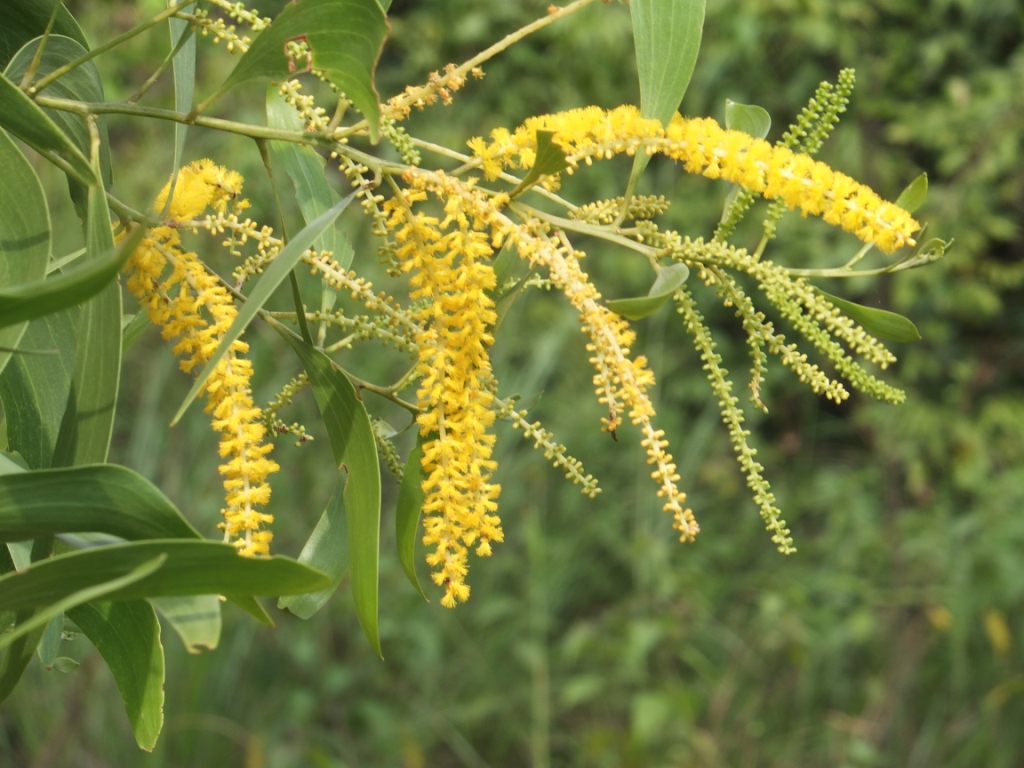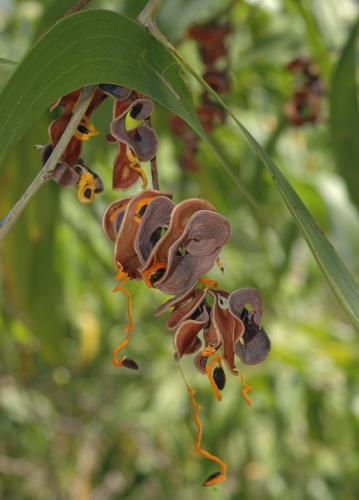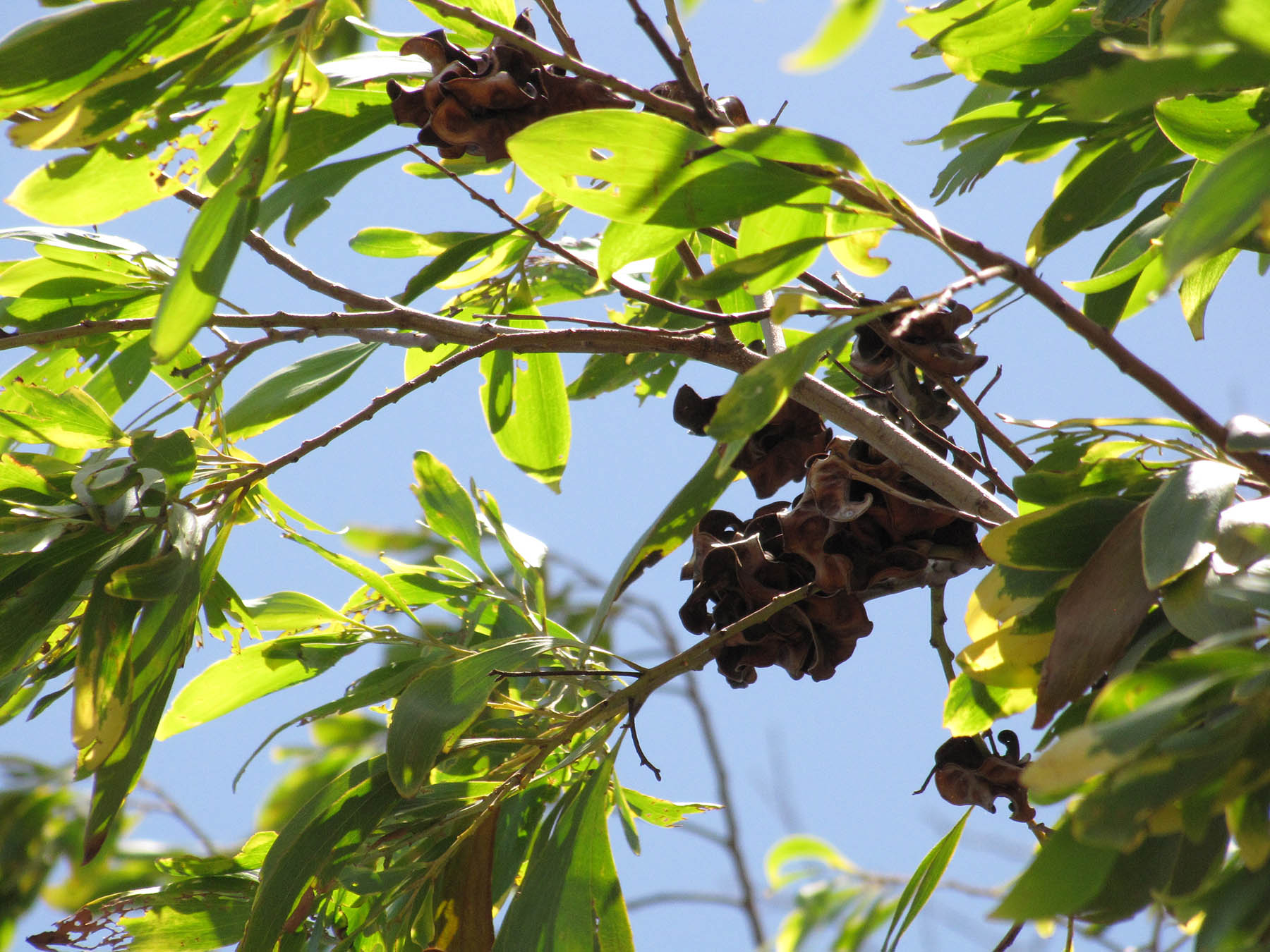Fruits/Seeds
Pods flat but strongly coiled, brown, linear to oblong that contain shiny black seeds.
Field Guide
Improve your identification skills. Download your Northern Black Wattle field guide here!
Fast growing medium-sized tree, 16 - 30 m tall that forms dense foliage cover. It is particularly drought resistant, and tolerates poor soil conditions.
Long, slightly curved leaves 10 - 20 cm long.
Grouped yellow flowers in a spike, up to 8 cm long, develop from February to August.
Pods flat but strongly coiled, brown, linear to oblong that contain shiny black seeds.
Improve your identification skills. Download your Northern Black Wattle field guide here!

First fully open single flower
Full flowering (record all days)
End of flowering (when 95% of the flowers have faded)
No flowering


Acacia polystachya can be distinguished by smaller bladed leaves that have a red or pink gland visible on the upper side. Flowers are also spiked, but are sparse and white, with pods that are usually twisted, curved or coiled to some extent.
A. auriculiformis shares the same common name as A. mearnsii which is unrelated and found in all states except Northern Territory.
Remember the flower (spike) colour can help distinguish between species.